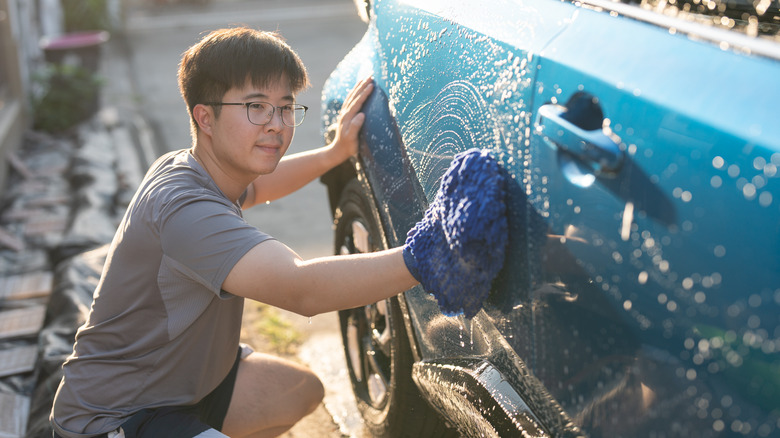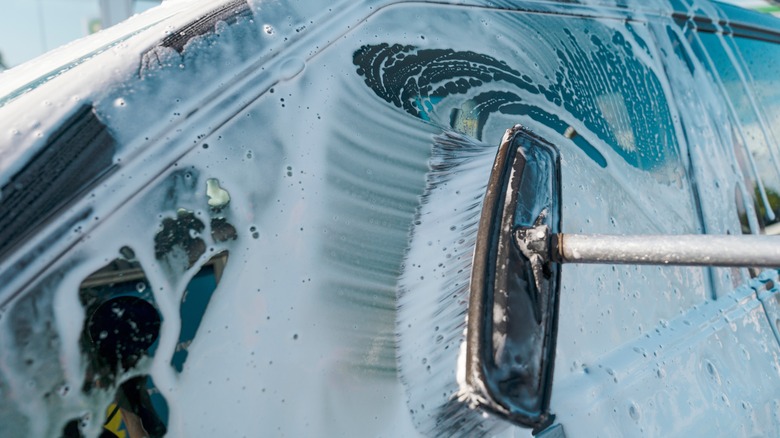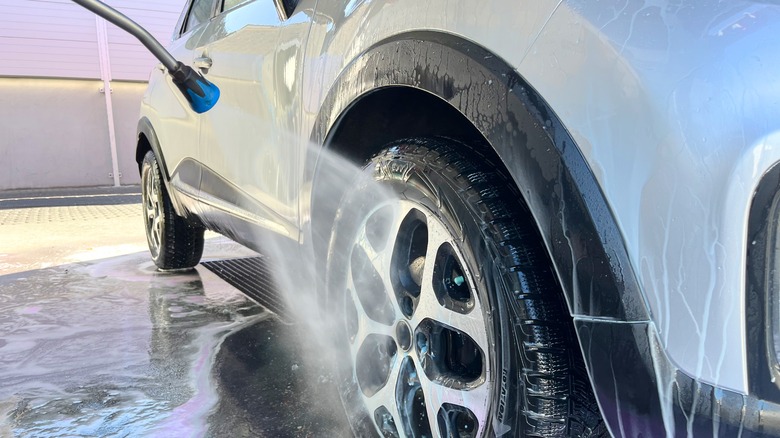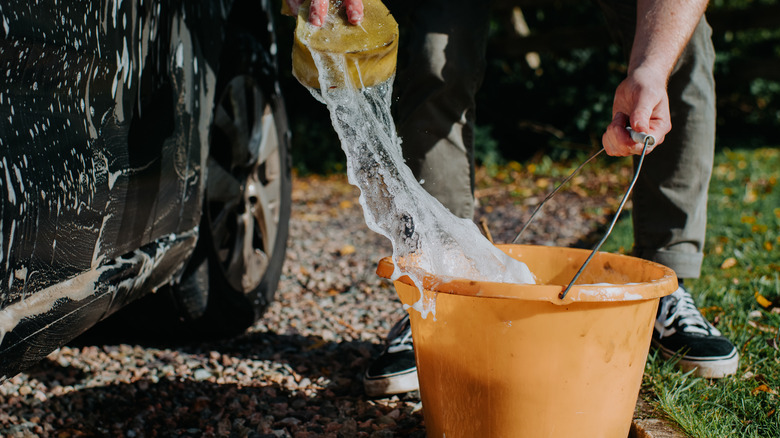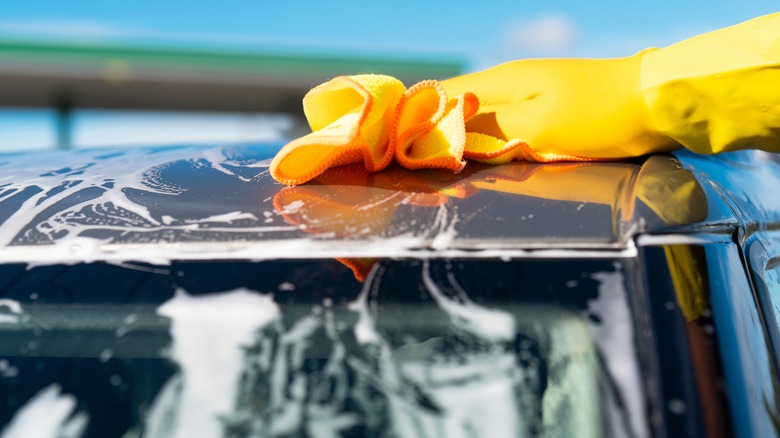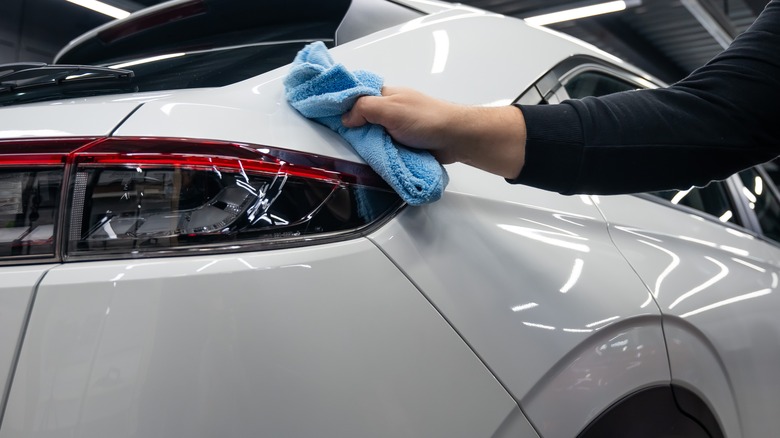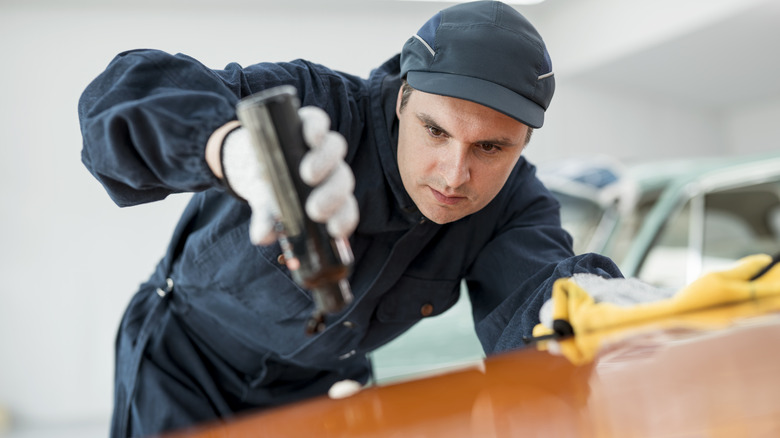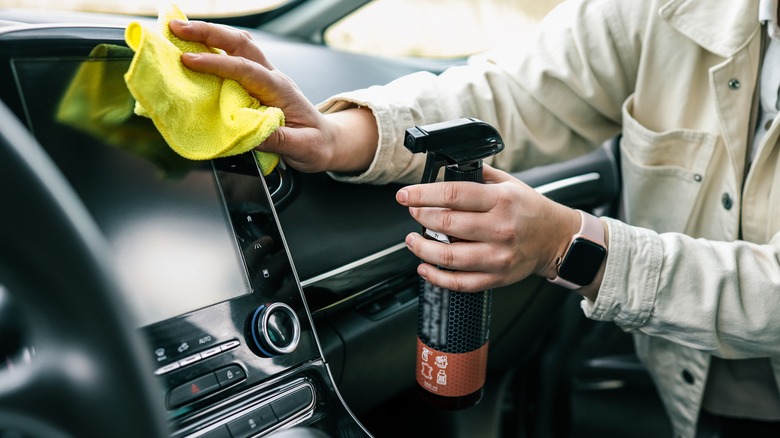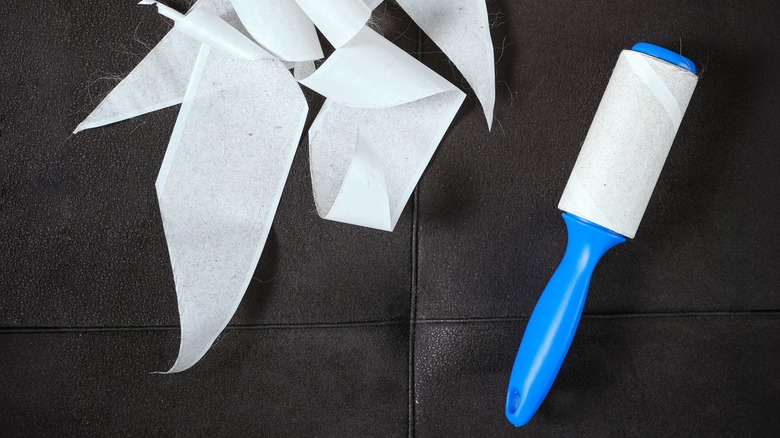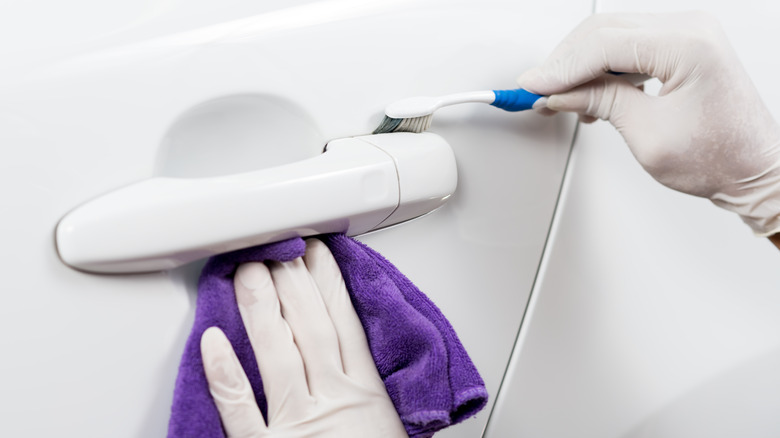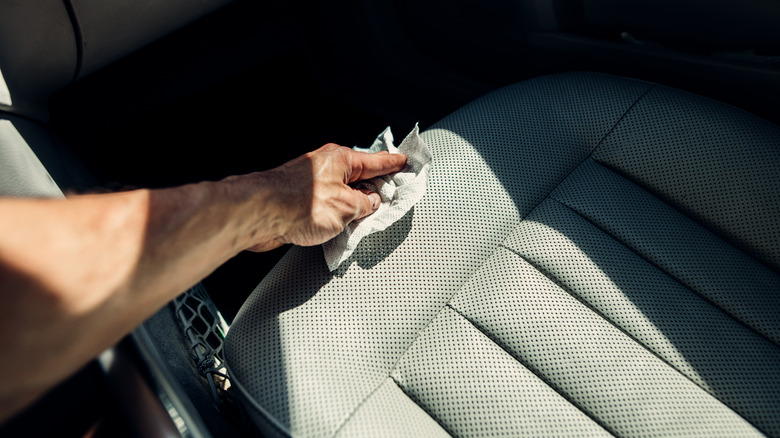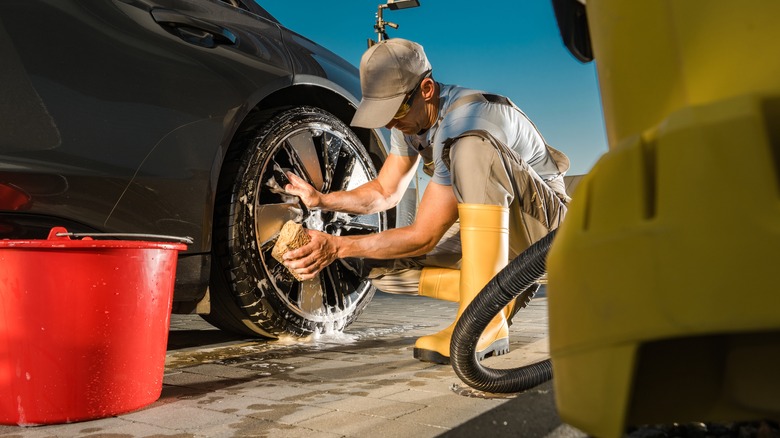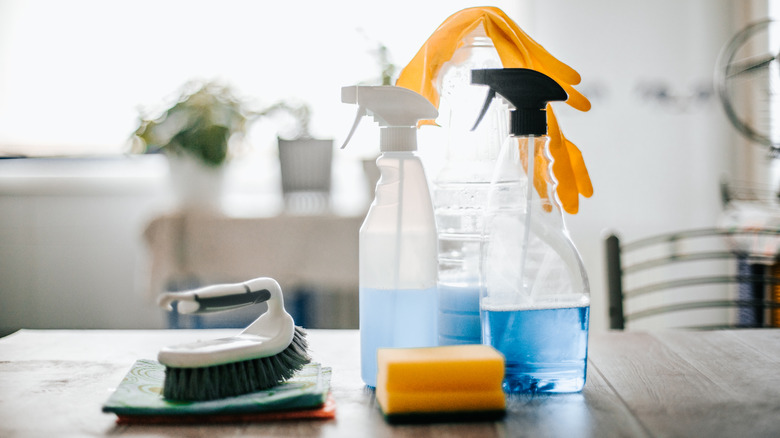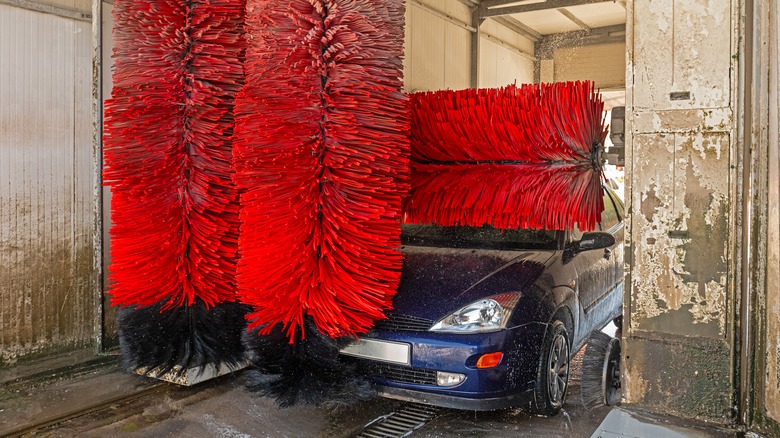10 Popular Car Cleaning Tips Worth Trying (And Some You Should Avoid)
Keeping your car ultra-clean isn't just about appearances, it's also about longevity. Regular washing can prevent contaminants like dirt, salt, and even bird droppings from damaging your paint and causing corrosion. Small chips in the paint can lead to rust if ignored, which could be costly. A well-maintained exterior of any vehicle preserves its resale value and prevents damages, should you decide to part ways with it down the road. Not to mention, keeping the car clean on the outside and inside creates a healthier driving environment. There's nothing quite like cruising in a freshly detailed vehicle, and keeping that new car-like fresh scent is unmatched.
Arguably most important, however, is safety and performance. A dirty windshield or foggy headlights could drastically reduce visibility, increasing accident risk. Bug splatter and grime from the roadways can also mess with sensors on most modern vehicles, possibly interfering with automatic braking or lane-keeping assistance. Many drivers aren't aware that even something like dirt build-up in the wheel wells can impact braking performance, a serious and potentially deadly problem.
No matter your reason — safety, aesthetics, performance, or to avoid damages — keeping your car washed and clean is vital. Certain techniques can also help the process get done correctly every time. Still, there are some common pitfalls to watch out for that could be counterintuitive and ultimately lead to more issues. Below are at least 10 crucial tips to keep in mind the next time you clean your car and some of the most common mistakes you might be making in the process.
Use pH-Balanced Car Wash Soap
One of the smartest moves you can make while washing your car starts with the soap you use. A pH-balanced option is purposefully designed to be gentle on the exterior finish while still tough on dirt, thanks to a carefully crafted formula that protects paint and wax. As an added bonus, some pH-balanced soap offerings even come with gloss enhancers or water-beading technology that helps ensure a pristine shine while avoiding infuriating water spots.
When shopping for soap at your nearest automotive retailer, look for labels that either have "pH-balanced" directly on them or "safe for all finishes." Neglecting to find a pH-balanced soap and opting for something like Dawn dish soap or a similar household product as a cleaning hack could be detrimental to your car's exterior. While dish soaps are known for cutting through grease in the kitchen, they could be a disaster on the vehicle as they're too harsh and can strip away protective wax or dull the paint. Instead, make this small change in your car care routine and preserve its value. Not to mention, the pH-balance soap will really make your car showroom shiny when paired with a nice microfiber cloth wipe down.
Start With a Rinse
Before you apply that pH-balanced soap, it's crucial to also give your car a rinse as the very first step in the process. This can easily be missed by drivers in a rush for time, but it's like prepping a canvas before painting. Only the best results will come if you rinse first, and without this step, there could be some consequences. Think of rinsing as a first-line defense against scratches because it sweeps away loose dirt, grit, and debris that would otherwise turn into tiny razors that scrape your paint while washing. If you're confused as to why you find some scrapes and scratches after washing your car, it could be that you neglected the initial rinse.
To do it right, use a garden hose with a high-pressure nozzle or, if you're serious about car care, a pressure washer set to a relatively safe level. Starting high and working down, the water will help the dirt and debris flow from already clean areas onto the ground and away from the vehicle. Make a note to also give special attention to wheel wells, the undercarriage, and areas around the tires, as they're dirt magnets. Each collects grime easily, which can accidentally get spread during a wash if you miss them.
Use the Two-Bucket Washing Method
After the rinse, it's best to bring over two buckets if you're hand-washing the vehicle by yourself. The two-bucket method is a game-changer in car cleaning because, like the rinse, it prevents scratches on the paint. In the first bucket, there should be clean, soapy (pH-balanced) water. The second bucket should hold plain water for rinsing and the microfiber washcloth or mitt to use when needed. The crucial aspect of the two-bucket method is that it prevents cross-contamination. If you're taking the clean, soapy water and wiping the grime off your car, then rinsing it back in the same bucket, the water isn't clean anymore. Instead, it holds the same dirt contaminants that were just wiped off and negates the entire process.
After each pass when using two buckets, make sure to dunk the microfiber mitt or towel into the rinse bucket before reloading it with the fresh soap bucket. While it may seem excruciatingly simple, this is an effective and key way to create a streak- and scratch-free finish. A professional move would be adding grit guard plastic inserts at the bottom of each bucket, as they trap and prevent dirt from being re-introduced to the cloth or mitt.
Clean from Top to Bottom
Washing your car from top to bottom makes a huge difference — but why is that the case? A simple answer would be gravity. The dirt and grime collected by your vehicle will wash away downward. Starting from the bottom and working your way up would be an easy way to accidentally get more dirt on parts of the car you just cleaned. Additionally, the top of the car is typically the cleanest, while lower sections collect the most particles. It would also be wise to use at least two separate microfiber mitts or washcloths while cleaning top to bottom. The first one is for the roof and the majority of the body, and the second is for the wheels to prevent any brake dust from scratching your paint.
Breaking the car up into cleaning sections could also be helpful. For example, start with the roof as the first section and then move on to the windows and the hood. Then, clean the doors, trunk, and lower paneling. Bumpers and wheels are last up, which is good because they're typically the dirtiest. Overall, the top-to-bottom method just makes sense and guarantees you are protecting the vehicle's paint job more than anything else.
Use Microfiber Cloths
While paper towels and old rags might seem convenient, they can still leave scratches or lint behind. Microfiber cloths, on the other hand, are soft, absorbent, and are designed for delicate surfaces. They're the absolute best option for washing, drying, and buffing a vehicle and are a must-have in your cleaning kit; a wash isn't complete without them. Microfiber cloths or mitts also trap dirt easily and prevent swirl marks, unlike cotton towels. Having multiple microfiber cloths on hand — for washing, drying, and waxing — is vital. An entirely separate set should also be used for interior detailing.
Another benefit of using microfiber cloths is that they're great for reducing static buildup, which can attract dust and make your car dirty again quicker than before. Ultra-fine fibers (hence microfiber) actively lift dirt, and that's why they reign superior. It's also important to clean the microfiber cloths themselves correctly. They're machine-washable but should be kept separate from other laundry, and fabric softeners should also not be used, as they can clog the fibers. Ensuring microfiber cloths are washed separately will maintain their effectiveness for years.
Apply Wax Regularly
Waxing isn't just about achieving a showroom shine — it's an essential part of protecting your car's paint. A proper coat of wax creates a protective barrier that shields the car's surface from UV rays, oxidation, bird droppings, and other road contaminants. Without it, your vehicle's clear coat is vulnerable to fading and minor scratches. But, how often should you apply it? It's best to put wax on your car about every three months, though the frequency can still depend on the climate where you live and driving conditions.
There are also several types of wax to choose from, including paste, liquid, and spray. Each offers benefits. The paste can provide the longest-lasting protection but requires more effort to apply, and a spray is great for quick touch-ups. Liquid wax is probably your best bet for a standard cleaning. Regardless of the type, always apply wax in a shaded area as well to avoid sunspots and use a microfiber applicator to finish the polish. The final product should be a glossy well-protected vehicle that repels water and dirt. Taking the time to apply wax ensures that future washes are easier and that your car's quality lasts for several years.
Clean Interior Surfaces Properly
A clean interior isn't just about aesthetics — it's about comfort and longevity. Dust, grime, and spills can accumulate quickly, leading to unpleasant smells and potential material damage if not addressed. Touching up the interior regularly can also help that new car smell last longer. The thing is, several products need to be used depending on the material you're cleaning within the vehicle. Vinyl, leather, and fabric upholstery all require specialized sprays or wipes to avoid cracking and fading over time. With dashboards and door panels, it's best to use a microfiber cloth with a gentle, non-greasy cleaner. A quick Google search will reveal several top-rated products from some of the best car cleaning brands.
It's also important not to forget high-touch areas like the steering wheel, gear shift, door handles, and touch-screen navigation systems with Apple CarPlay. They collect the most bacteria. Special disinfectant wipes can work for those areas to keep them sanitary. For dust in vents and cupholders, a soft-bristled detailing brush or compressed air works wonders. Regularly vacuuming the carpets and seats will also keep everything feeling fresh. Overall, maintaining your car's interior properly will improve the driving experience and considerably improve its resale value.
Use a Lint Roller for Pet Hair Removal
If you're a dog owner, you know that their fur has a way of embedding itself into your car's upholstery. A lint roller is an easy, affordable solution to lift pet hair from seats, carpets, and floor mats. Simply roll it over surfaces, and the adhesive will pick up the loose hair almost instantly. If some areas seem a little bit more stubborn, you could put on a rubber glove and try rubbing it along the fabric first, as the friction will help pull the hair up into clumps, making it easier to remove with the lint roller.
You can get an even deeper clean afterward using a handheld vacuum with a pet hair attachment. The attachment will include rubberized bristles that effectively do the same thing the rubber glove would do and lift embedded fur. A combination of regular vacuuming and lint rolling together will easily prevent excessive buildup. You can also lightly mist your seats with water before using the lint roller — the static electricity could cause the hair to stick better. It's best to keep a small lint roller in your vehicle at all times in your glove compartment for touch-ups on the go. By staying on top of the pet hair, the car will smell as fresh as it can and have fewer allergens floating around for other riders.
Clean Hard-to-Reach Areas with a Toothbrush
Dust and grime love to settle into your car's smallest nooks and crannies on the exterior and interior. Air vents, cup holders, buttons, crevices between seats and door handles are all culprits. A soft-bristled toothbrush is the perfect low-cost detailing tool to reach the tight spots.
After spraying a cleaner for the designated area, scrub gently and then wipe away any debris with a microfiber cloth like for the other parts of your car. Additionally, if you want some added precision, wrap the cloth around the toothbrush head to get the most tricky and uncleaned areas of the vehicle. This works especially well for nooks and crannies on the outside of the car as well or in between the wheel wells. The toothbrush ensures that no dirt gets left behind while cleaning, giving the interior and exterior a pristine and professional-looking detailing without the high cost.
Keep a Towel in the Car for Spills
There will always be times when you have to eat or drink in the car, or maybe you're taking groceries home, and unfortunately, a bag falls over. It happens — spills are inevitable, but stains don't necessarily have to be. If you keep a microfiber towel in your car, it ensures that you're always prepared for sudden messes. Spilled coffee, soda, or even water from being out in the pouring rain can be quickly wiped up with a towel until you can get some cleaning products and remove the stains and scent later on. Microfiber is a common theme for cars because it's, again, super gentle but also highly absorbent. That means you can blot up spills before they set in. Blotting is crucial — never rub, as it will push the liquid deeper into the material if you do.
Keep a dedicated microfiber towel in your glovebox or another area for storage in the car. Doing so can save your upholstery from diabolical stains that could impact the car's resale value down the road. It might even be wise to keep a larger towel on hand for pets, beach days, or massive spills. Hopefully, you won't need it.
Avoid Washing in Direct Sunlight
Washing your car on a sunny afternoon might seem like a great idea, but direct sunlight can do more harm than good. The main issue is that heat causes water and soap to evaporate quickly, meaning stubborn water spots and streaks could be left behind on your car fairly easily. The mineral deposits could etch into your car's clear coat over time, diminishing the shine and potentially even leading to long-term damage if you're not careful.
Also, the rapid evaporation of cleaning products can prevent them from doing what they're supposed to do — loosening dirt and grime — making washes less thorough. Instead of actually picking the dirt up off the surface of the vehicle, it could be dragged along the paint instead, increasing the risk of scratches. The best time to wash your car is either early in the morning or late in the afternoon when the sun isn't at its peak. It would be even better if you could find a shaded spot or do it on a cloudy day to ensure a streak-free finish. While it might be fun to wash the car in the sun, taking the extra precaution to not do it will maintain the paint job longer.
Avoid Using Household Detergents
When you're out of car wash soap, you might be tempted to grab dish soap or laundry detergent as a substitute. Please, do not do that. These types of household cleaners are too harsh for the delicate finishes on your car. Most dish soaps are designed to break down grease and tough residues, which means they can strip away the protective wax layer on your vehicle easily. Without this crucial layer, your car is left vulnerable to oxidation, fading, and other environmental damage.
Laundry detergents and all-purpose cleaners can be even more aggressive, containing chemicals that can dry out rubber seats and dull plastic trim. This leads to a rough, faded, or even a chalky-like appearance on the car's surface. This is, again, why the pH-balanced car wash soap is so important. It has formulas designed to effectively remove dirt and grime without compromising the integrity of the protective coatings on the car. So, if you happen to run out of pH-balanced soap, just hold off until you can replace it. It's worth it to hold your wash off for an extra few days rather than accidentally cause permanent damage through the use of household detergents.
Avoid Frequenting Automatic Car Washes with Brushes
Automatic car washes can be incredibly tempting as they offer sweet convenience, but not all are gentle on your vehicle. Many of the older or poorly maintained car washes at your local gas station have large rotating brushes with stiff bristles or abrasive materials. These types of brushes collect dirt, sand, and grime from previous washes very easily, effectively turning them into high-speed sandpaper on your car's paint. The result might be a very temporary shine, then swirl marks and fine scratches — and potentially even deep abrasions — that will dull a vehicle's finish later.
Another issue with automated car washes with large brushes is that harsh cleaning chemicals are used to compensate for the efficiency. That means wax protection on your vehicle can easily be stripped away. If you prefer a hands-free wash, look for a touchless car wash, as it relies on high-pressure water and detergents without the physical contact of large brushes. However, hand washing with microfiber mitts, pH-balanced cleaning fluid, grit guards, and two buckets really is the way to go to keep your car in pristine condition.
